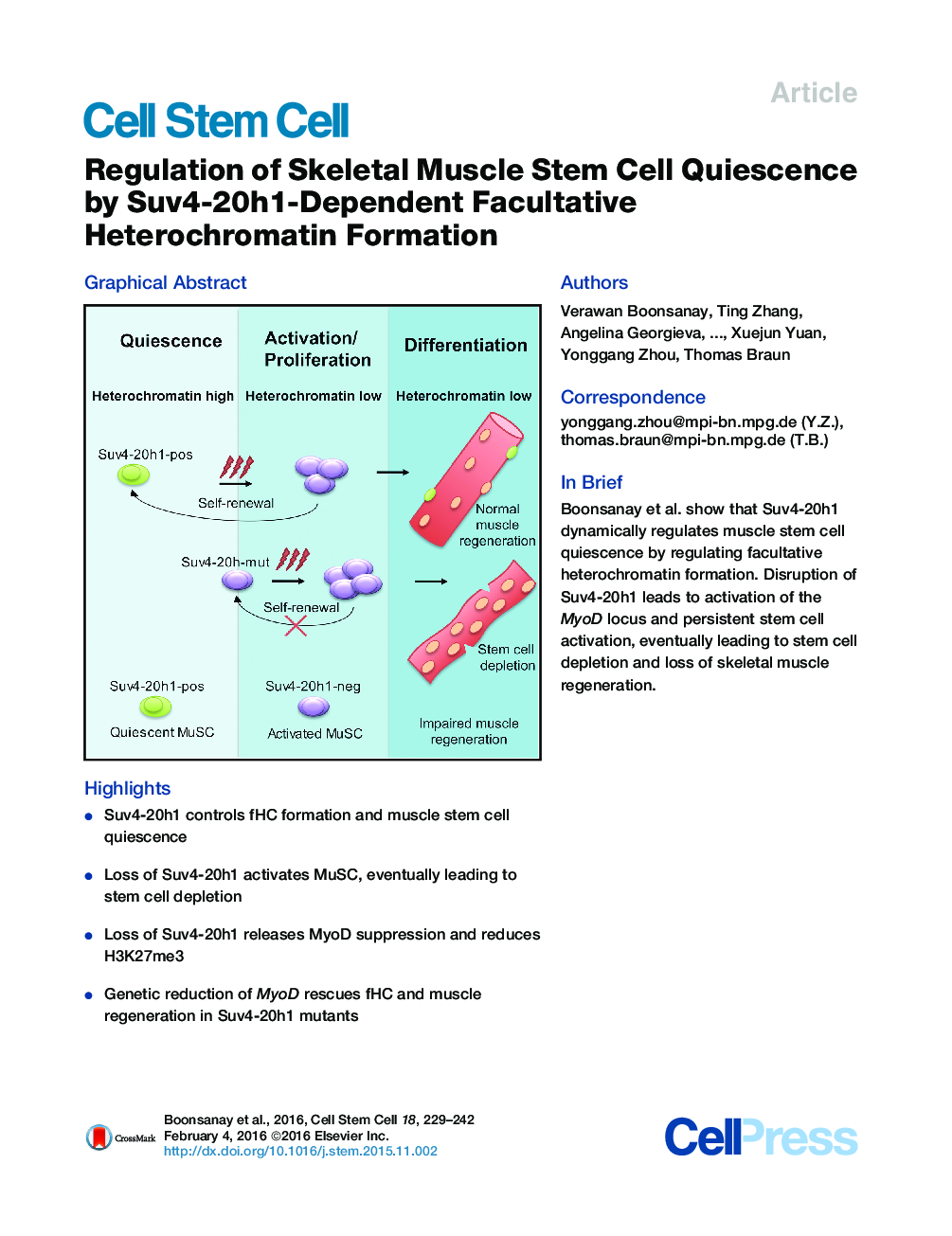| Article ID | Journal | Published Year | Pages | File Type |
|---|---|---|---|---|
| 2077269 | Cell Stem Cell | 2016 | 14 Pages |
•Suv4-20h1 controls fHC formation and muscle stem cell quiescence•Loss of Suv4-20h1 activates MuSC, eventually leading to stem cell depletion•Loss of Suv4-20h1 releases MyoD suppression and reduces H3K27me3•Genetic reduction of MyoD rescues fHC and muscle regeneration in Suv4-20h1 mutants
SummarySkeletal muscle stem cells (MuSCs) are required for regeneration of adult muscle following injury, a response that demands activation of mainly quiescent MuSCs. Despite the need for dynamic regulation of MuSC quiescence, relatively little is known about the determinants of this property. Here, we show that Suv4-20h1, an H4K20 dimethyltransferase, controls MuSC quiescence by promoting formation of facultative heterochromatin (fHC). Deletion of Suv4-20h1 reduces fHC and induces transcriptional activation and repositioning of the MyoD locus away from the heterochromatic nuclear periphery. These effects promote MuSC activation, resulting in stem cell depletion and impaired long-term muscle regeneration. Genetic reduction of MyoD expression rescues fHC formation and lost MuSC quiescence, restoring muscle regeneration capacity in Suv4-20h1 mutants. Together, these findings reveal that Suv4-20h1 actively regulates MuSC quiescence via fHC formation and control of the MyoD locus, thereby guarding and preserving the stem cell pool over a lifetime.
Graphical AbstractFigure optionsDownload full-size imageDownload high-quality image (215 K)Download as PowerPoint slide
